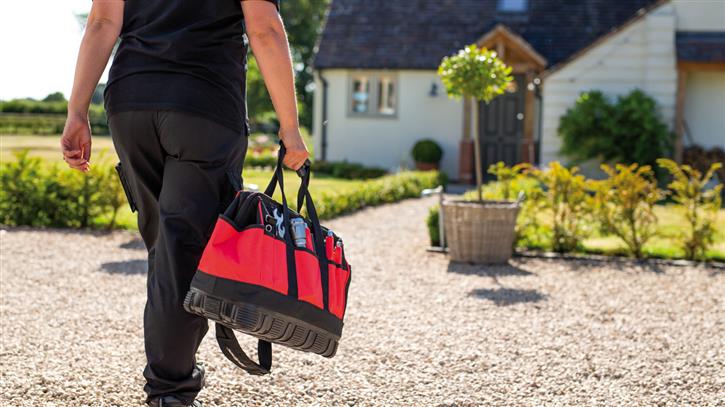


Karl Bateman, National Specifier Manager at Calor, dispels some of the common installer myths surrounding LPG.
There are a number of commonly held misconceptions and inaccuracies surrounding LPG. Here are just a few myths which need to be busted.
There is little customer demand for LPG
Nearly four million rural homes in the UK do not have access to mains gas, and instead rely on alternatives such as oil, electricity or solid fuel for heating, hot water, and cooking. This means there’s a vast potential market for customers who could be interested in switching to LPG.
What’s more, the government’s new Clean Growth Strategy means many off-grid homeowners are considering cleaner, lower carbon fuels such as BioLPG to futureproof their home, so there’s never been a better time for your customers to switch.
LPG isn’t sustainable
LPG is the lowest CO2 emitting fossil fuel available to off-grid homes and can offer up to 20% lower carbon emissions than oil, according to Atlantic Consulting’s report – LPG’s Carbon Footprint Relative to Other Fuels. The recently launched BioLPG can help cut emissions further still.
BioLPG is made from renewable materials and will reduce your customer’s carbon footprint for home heating by 38% compared to heating oil, according the BioLPG’s carbon savings report from Atlantic Consulting. It is chemically identical to standard LPG, but is created from a mix of renewable and waste materials.
It’s difficult to become LPG qualified
To become LPG qualified, gas-certified installers only need to complete two key ‘top-up’ qualifications.
The first is CCLP1: Core LPG Safety Training and Assessment. This is a gas safety qualification and is required for any engineer wishing to work on LPG installations or further their training. Most candidates will complete the course in a few days, covering the basics of working safely with LPG, as well as all relevant safety legislation and standards.
The second important qualification is CONGLP1 (PD): Conversion of Natural Gas to LPG. This allows an installer to convert all of their existing natural gas qualifications to their equivalent LPG counterparts. For example, if you are qualified to safely work on natural gas cookers, this will allow you to work on cookers fuelled by LPG.
Switching to LPG is a complex process
Manufacturers can help with everything from tank specification to siting, leaving the installer to carry out the boiler installation. In most cases, the tank can be installed in just one day. This includes civil works, external pipework, and delivery and installation of the tank.
LPG boilers are difficult to install
Replacing an existing oil-fired boiler for an LPG system is easier and faster than installers may think. With technology that is almost identical to mains-gas combi boilers, installers should find LPG boilers familiar to install.
When working with gas, the installer doesn’t have to worry about air in the system, or connecting the filter. This can make installation quicker, and where an oil boiler could take a day and a half to install, an LPG boiler would only take a day to fit. Boilers that are not purchased factory-ready can easily be converted from mains gas to LPG on-site by the installer too.
LPG boilers are expensive
Switching to an LPG boiler can actually be a cost-effective option for customers, with an LPG boiler costing an average of £900 less than an oil boiler, according to our comparative pricing. As well as costing less to purchase, many A-rated LPG boilers have also been proven to achieve efficiencies of 90% or more. This energy efficiency makes them kinder to both the environment and the customer’s bank balance.
Not enough support for LPG installers
Manufacturers offer a range of support and incentives to its installer community. In Calor’s case, installers benefit from professional literature and a listing on the ‘Find an installer’ tool on the Calor website.
If you'd like to keep up-to-date with the latest developments in the heating and plumbing industry, why not subscribe to our weekly newsletters? Just click the button below and you can ensure all the latest industry news and new product information lands in your inbox every week.